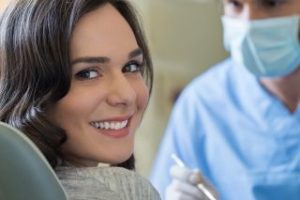 The phrase, “Use it or lose it,” could be applied to a lot of things in life. If you learned a second language in high school but haven’t used it in years, you may have lost it. If you had strong abdominal muscles at one time but haven’t done a sit-up in 20 years, you may have lost them too! And, although you probably don’t think about missing out on your dental benefits by not seeing a dentist, it happens more often than you would expect. Since your insurance plan sets aside a certain amount of money each year, if you don’t use it, you lose it. Keep reading to find out how to avoid losing your benefits and learn what kind of coverage the most common procedures have. You may as well take advantage of your insurance benefits – otherwise, it’s like passing up free money!
The phrase, “Use it or lose it,” could be applied to a lot of things in life. If you learned a second language in high school but haven’t used it in years, you may have lost it. If you had strong abdominal muscles at one time but haven’t done a sit-up in 20 years, you may have lost them too! And, although you probably don’t think about missing out on your dental benefits by not seeing a dentist, it happens more often than you would expect. Since your insurance plan sets aside a certain amount of money each year, if you don’t use it, you lose it. Keep reading to find out how to avoid losing your benefits and learn what kind of coverage the most common procedures have. You may as well take advantage of your insurance benefits – otherwise, it’s like passing up free money!
J.B. Dental Blog
Have You Seen a Dentist This Year? Don’t Let Your Benefits Pass You By!
September 22, 2018
Welcome To Our Blog: Meet the Dentist and Learn About Our Services!
September 7, 2018
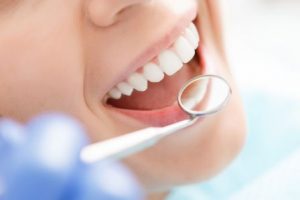 Welcome to our new website and blog! We wanted to give you a place to find valuable information about everything from what to expect from a dental procedure to helpful hints about achieving fantastic oral health. For today’s blog, you’ll get an introduction to the services we offer and find out what you can expect from your experience at J.B. Dental. But be sure to check back in each month for great information on a variety of topics. Whether you’ve been a patient for a long time or haven’t scheduled your first visit yet, we look forward to serving your dental needs for many years to come!
Welcome to our new website and blog! We wanted to give you a place to find valuable information about everything from what to expect from a dental procedure to helpful hints about achieving fantastic oral health. For today’s blog, you’ll get an introduction to the services we offer and find out what you can expect from your experience at J.B. Dental. But be sure to check back in each month for great information on a variety of topics. Whether you’ve been a patient for a long time or haven’t scheduled your first visit yet, we look forward to serving your dental needs for many years to come!
5 Reasons To Consider Invisalign® Braces
April 16, 2018
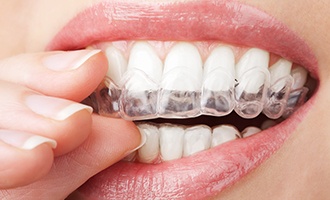
For many adult patients, the need for braces can be an unattractive prospect. Having to restrict your diet and deal with the aesthetic impact of braces can cause patients to avoid treatment altogether. What you may not know is that Invisalign® braces offers patients a way to improve dental health and alignment discretely, without the need for metal braces. (more…)
Helping Your Kids Develop Good Dental Habits
April 10, 2018
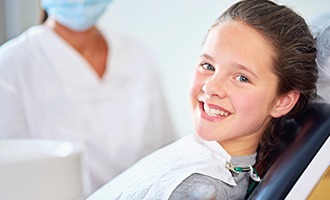
If you’ve been searching for advice from a family or pediatric dentist in Westminster about how to help your child develop good dental habits for life, J.B. Dental is here to help. One of the most important first steps is teaching your child how to brush his or her teeth. This is the foundation for a lifetime of healthy smiles!
(more…)
Why Veneers May Be Just What You’ve Been Looking For
March 22, 2018
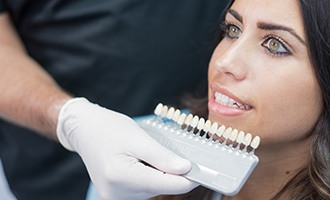
Can your smile benefit from veneers? A veneer is a relatively inexpensive thin shell of tooth-colored material cemented onto the front of a tooth to improve its appearance and function. Veneers can give your teeth a more natural, aesthetically pleasing appearance and are stain resistant and soft on gums. In some cases, veneers can serve a restorative purpose and can protect a damaged tooth from further harm. Porcelain veneers are a dream come true for people who have been in despair about their smile. Dr. Joanne Bancroft often sees patients wanting find out what can be done to correct a smile that has lost its luster over the years. Our patients are universally delighted to learn how effective porcelain veneers are in eliminating an embarrassing dental feature and replacing it with an engaging and brilliant smile. Porcelain veneers in Westminster are popular because they boost self esteem and confidence. This is particularly important to those who rely on a warm, friendly, and engaging smile in their career. Dr. Bancroft may recommend veneers in if you have one or more of the following dental issues:
(more…)
